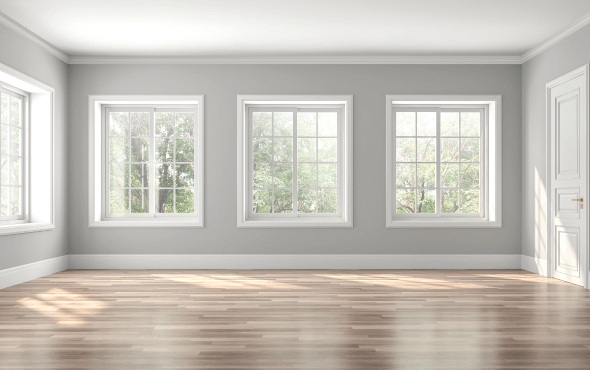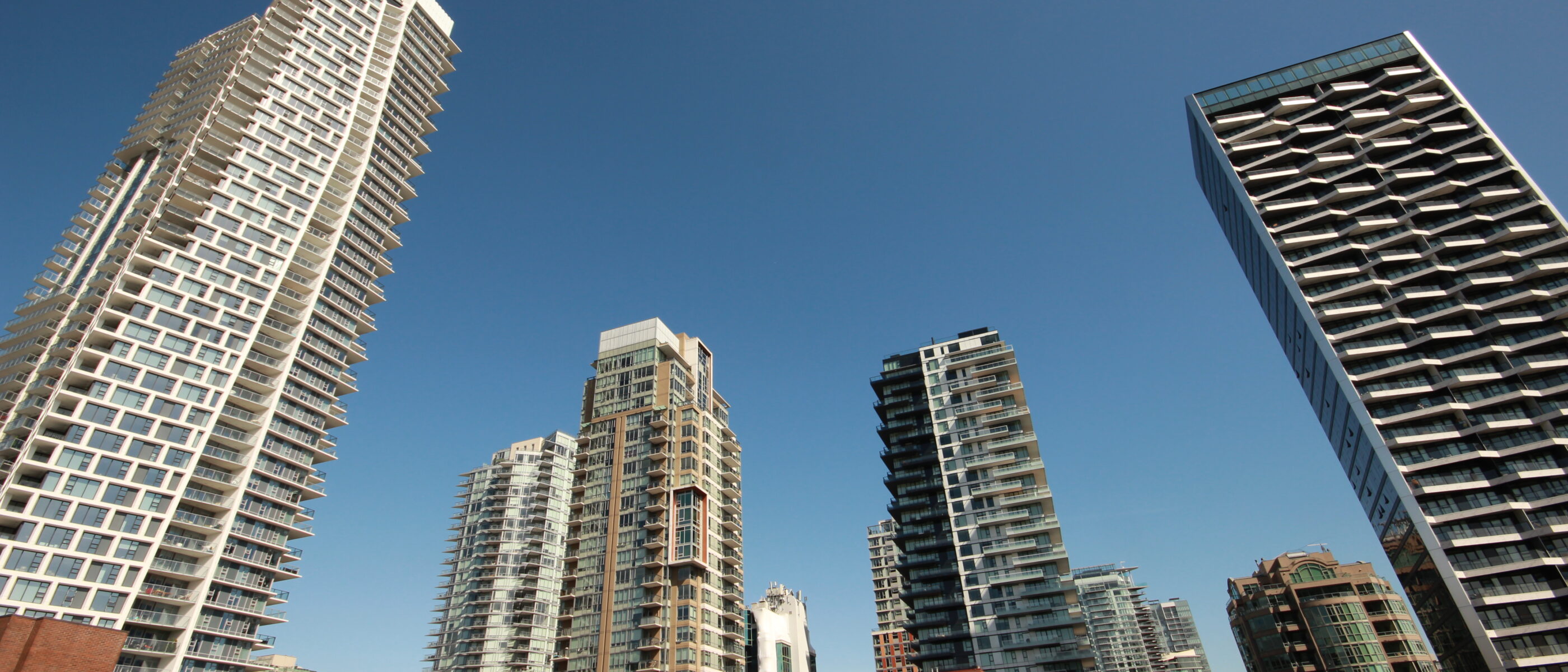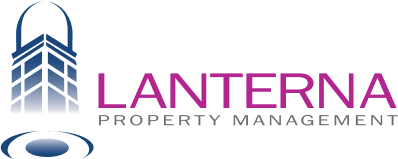Furnished Versus Unfurnished – Which Market is Best for Your Rental Property?
As a Rental Property Manager, one of the most common questions I am asked by clients is if they are better off renting their property as a furnished rental or as an unfurnished rental.
The answer to this question will vary depending on a variety of factors, including current legislation, motivation, level of urgency, need for stability, budget, financial expectations and location as well as a review of the current rental market. Each of these factors should be considered as part of your decision-making process to ensure you are entering the market that works best for the goals and needs of your rental property.
Below are some points to consider as they relate to each of these factors.
Factor 1 – Legislation: Does legislation exist that limits or prevents you from carrying out your goals in relation to the property?
Before discussing potential legislative barriers, it is important to understand the difference between each of the rental market segments. These include:
Unfurnished Rentals – Rental properties that come without furniture in place, typically on a long-term tenancy agreement (generally a term of 1 year that carries over to a month to month tenancy afterwards). In most cases, tenants are responsible for setting up and maintaining their own utilities.
Furnished Rentals – These are condos or homes rented with furniture in place, and typically include utilities, cable/internet, cleaning etc. While some furnished rentals will rent for periods of 1 year or longer, the clientele of most furnished rentals require the rental for a shorter period of time, so furnished rentals are normally available for shorter lease terms.
It should be understood that there are 2 categories of Furnished Rentals – Short-Term and Long-Term, and understanding the distinction between the 2 is essential to avoid problems down the road.
Short-Term Furnished Rentals – The definition of a Short-Term Rental was recently changed by both the Province of BC as part of the Short-Term Rentals Accommodations Act and subsequently by the municipalities throughout BC to match the new Provincial legislation.
- Previously, the definition of a Short-Term Rental was a rental period of less than 30 days. The most common example of these were the rentals being offered as nightly rentals on short-term rental platforms such as Airbnb.
- The new definition of a Short-Term Rental is a rental period of less than 90 days.
Long Term Rentals – a rental with a rental period of 90 days or more
Unless you have a Short-Term Rental License that has been issued by the city that your rental property is located in, and the rental property has been registered as a Short-Term Rental with the Province of BC, you must rent it for periods of at least 90 days. Short-Term rental licenses are only granted under very limited conditions and will not be available to most property owners. If you are considering Short-Term rentals for your rental property, make sure to visit the city website for the municipality that your rental property is located in to review the licensing criteria and to be sure you are eligible for a Short-Term Rental License.
This legislation has had a significant impact on the furnished rental market and will be a consideration for anyone that owns a furnished rental or is considering starting one. The main reasons for this are as follows:
- Many of the Short-Term rentals that were marketed on the Short-Term rental platforms, such as Airbnb, have moved into the Long-Term furnished rental market as a solution to not being eligible for a Short-Term Rental License.
- As a result, these are no longer marketed to their former client type (which was primarily tourists on a short-term nightly or weekly basis). These now compete with Long-Term rentals for clients of that market.
- Because the minimum stay for a Long-Term rental has increased from 30 days to 90 days, the number of potential clients for Long-Term furnished rentals has decreased, while the amount of available rentals in that market has increased – To much inventory, Not enough clients
The Furnished Rental Market will still be the more viable option for some property owners, however, with these changes to the legislation of how a Short-Term rental is defined, many owners of rental property may start to see a better occupancy and bottom line by entering the unfurnished market.
Factor 2 – Motivation: What is your primary reason for opening your home or condo as a rental property?
There are several different reasons you may be considering bringing a property into the rental market. Taking the time to pinpoint what these reasons are is the first step in determining which market segment will likely be the best fit for the property.
When your motivations are the result of a change in your current living situation where you are renting out a home that you currently live in and are planning a move elsewhere, the furnished rental market may be beneficial as you likely already have furnishings in place. This is assuming that you are purchasing new furniture for the property you are moving to and that your current furnishings meet the standards necessary for a furnished rental.
In the case of a sentimental motivation, it is common to prioritize one or more of the following:
- Bottom Line – covering as much of your expenses as possible
- Stability – having a good long-term tenant in place where you can rely on an average income
- Condition of the Rental Property – where you have as little turn over as possible in an attempt to minimize wear and tear.
In these cases, you may lean more towards the unfurnished market as it can be easier to predict yearly finances and typically provides stability by attracting longer term tenants.
Examples of sentimental motivation include:
- Your first purchased property
- A family home, or an inherited property
- The first place you lived when you moved to the city
- It has any other emotional attachment that deters you from selling it
A financial motivation, such as the need to generate income in a property that is vacant and listed for sale, but is in a bad sales market, the priority will often be getting a tenant in as quickly as possible with the least amount of expense. In these cases, unless it is already furnished to standard, the furnished market may not be the ideal option due to the expense and time needed to furnish it. On the other hand, if you are hoping to relist the property down the road, you may have a better chance of renting to tenants that need the property for a shorter period of time in the furnished rental market, giving a better chance of having an empty apartment again when relisting.
When your motivation involves a future intended use for the rental property, such as a desire to use it for retirement or to use it as a home for you children to use when they attend secondary schooling in the future, you may prefer the stability of an unfurnished rental, where you have the best chance of a long term tenant and less turn over.
For condos that were purchased strictly as investment, it is not unusual for the owners of rental property to enter the unfurnished market as it tends to be more stable and reliable and often sees a better bottom line at year end.
Factor 3 – Level of Urgency: How long can you afford to leave the property vacant before you will start to feel the negative effects of not having a rental income?
If the need to generate rental income in urgent, you are going to be much more reliant on the conditions of the current rental market in order to secure a suitable tenant as soon as possible. The following are considerations as they relate to each market:
Furnished Market:
- Is the rental property already furnished, and if so, is it furnished to the standard necessary to successfully enter the furnished rental market immediately?
- If it is not yet furnished, how much time and expense will it take to get it market ready? Market ready for furnished rentals mean when all of the furnishings are in place and it is clean, uncluttered and ready for photos.
- Is there other work to be completed, such as painting or updating to appliances, fixtures or flooring that will take time to complete?
Unfurnished Market:
- Is there work to be completed, such as painting, changes to appliances, fixtures or flooring that will delay the date you are able to move someone in?
- What is the date of the next rental cycle?
- As a general rule (though not always the case), most tenancy agreements for unfurnished rentals begin on the 1st of a month. This means that a large percentage of qualified tenants that are planning a move will be actively looking about 6 weeks out from the desired date of move in. In response, if you are hoping to find a tenant for an August 1st start date, you should try be actively marketing and showing the rental property as early as possible in June in order to have access to the largest pool of potential tenants. Once you get past July 1st, and each day thereafter, the tenant pool for August 1st tenants significantly shrinks, potentially leading to a loss of rental income for the month of July.
Factor 4 – Need for Stability: Will you rely on a relatively consistent rental income each month to meet financial obligations?
The furnished rental market can be notoriously bad for those whose primary need is stability, in particular as it relates to both vacancy and fluctuations in the rental rate. If stability is at the top of your priority list for your rental, often the unfurnished rental market will be the better option for you. The following are considerations as they relate to each market:
Furnished Market:
- Furnished Rentals typically have a higher rate of turnover, which can result in vacancy periods where the property sits empty for a period of time between tenants.
- The furnished rental market is constantly changing, and as such rental rates can fluctuate significantly. While you may secure a higher rent when the furnished market is strong, you may need to significantly reduce that rate in order to secure tenants during weaker periods. This makes it very difficult to rely on a set rental income across the year.
- One way to attempt to mitigate the higher turnover rate is to increase your minimum lease requirement. As it stands, the minimum lease requirement is 3 months (unless you have a Short-Term Rental License – as explained earlier in the Legislation section of this post). By increasing this to a minimum of 6 months or 1 year, you can effectively decrease your turnover rate. However, it is important to note when increasing your minimum lease term requirement, you are most likely decreasing your potential rental pool at the same time. To understand this a little better, it helps to understand who the average renter of a furnished rental property is. Typically, someone renting a furnished rental property has a definitive plan for the relatively near future which will limit the rental term they are looking for. Common reasons for this include:
- Temporarily relocating to the city for work, family or medical reasons
- Requiring temporary accommodations while renovating or building a property
- Requiring temporary accommodations while searching for a property to purchase or while waiting for the possession date of a purchased property
- Students moving to the city to attend school for a set period of time
- Newcomers to the city that need a shorter term furnished rental that allows them to take the time to search for a more permanent long term unfurnished rental property
When increasing your minimum rental term, don’t forget to consider the potential rental pool available in your area in order to best maximize the number of potential tenants that would consider your rental property as a viable option that meets their needs.
Unfurnished Market:
- As a general rule of thumb, most unfurnished rental properties are offered with a minimum 1 year lease term, making it much easier to predict an average rental income each month. It is important to note that even with a 1 year lease term, situations can arise that can create instability, such as a broken lease, a tenant eviction or extensive maintenance or repair issues, but overall, if stability is essential, the unfurnished rental market is usually a much safer option.
Factor 5 – Budget: Do you have any budget restrictions? In addition to mortgage payments, property taxes, homeowners insurance and monthly strata fees, you will need to budget for a variety of expenses as part of renting your property. Expenses that you should consider when creating your budget include the following:
Furnished Rentals:
- Cost to furnish the apartment – if the property is not already furnished to the necessary standard to bring it into the furnished rental market, this can be a significant expense, so should not be understated. The easiest method for creating this part of the budget is to create a room by room budget, and then use that to set the budget for overall furnishing.
- Upgrades, Maintenance or Repairs required prior to marketing – this commonly includes a variety of items such as painting, cleaning of window coverings, general repair work, upgrades or changes to flooring, fixtures or appliances. It is always best to meet with your Property Manager in the property prior to making any final budgeting decisions in this category to discuss what items should be considered for upgrading or maintenance.
- Set up & maintenance of any required utilities. This may include heat & electricity, gas service, garbage & recycling, lawn/yard care, and any other service that may be required.
- Set up & maintenance of cable & internet services
- Any move fee’s charged by the Strata between tenancies
- Cleaning fees for tenant change overs
- The addition of contents coverage on your Homeowners Insurance policy
- Replacements for items that wear over time, such as pillows & linens
- A Maintenance budget each year for maintenance items that may arise
- Management fees
- Periods of vacancy
Unfurnished Rentals
- Painting is a common expense for an unfurnished rental, and needs to be assessed between each set of tenants. There is a varying degree as to the size of the paint job, as often times painting will just require some touch up work or just a few walls to be done. For the purpose of budgeting, however, it should be assumed that a full paintjob will be necessary each time you have to replace your tenants.
- Any other upgrades, maintenance or repairs that you wish to have done prior to placing tenants.
- A Maintenance budget each year for maintenance items that may arise
- Management fees
- Period of vacancy
Unfurnished Rentals do tend to be more budget friendly because the tenants are typically responsible for many of the additional expenses, such as utilities and strata move fees. Additionally, there is not the need to purchase and replace furnishings, linens etc, and because tenant change overs are not as common, the need for refreshing (such as painting) is less common. Management fees also tend to be significantly less for Unfurnished Rentals.
Factor 6 – Financial Expectations: What monthly rental income are you hoping to obtain, and how will this translate to your bottom line?
It is not unreasonable to assume that you are going to be able to obtain a higher rental income for your furnished rental than you would for your unfurnished rental. Naturally, the furniture ads value, and therefor will justify a higher rent.
How much higher of a rent you will be able to obtain will always be dependent on the current rental market for each market segment (furnished versus unfurnished), and will also depend on many of the other factors discussed in this blog post. It is always important to determine what the current market rates are for your property in each market segment, and how other factors may affect the asking rent for your specific property before determining what rental range you can expect.
Once you have a realistic rental range set, it is important to then use the budget you created in the previous section to figure out what you expect as your bottom line for each market segment. Don’t be surprised if you find that your bottom line appears better when running the property as an unfurnished rental as this is fairly common in many situations.
Factor 7 – Location: Which market segment is the location of your rental property best suited to in relation to rentability?
The location of your rental property will play a big part in determining a reasonable market rental rate and how rentable the property is. It is important to understand that furnished rentals are suited to specific areas that fit their typical tenant base. Taking on the added expense of furnishing a condo in areas that are outside of those areas where furnished rentals are popular can be a very costly mistake resulting in months of lost rental income simply because there is no clientele for it.
Factor 8 – Current Rental Market Conditions: What are the current market rents for each market segment as they relate to your rental property, and does the supply match the demand.
The rental markets for both Furnished & Unfurnished Rentals will fluctuate. When you are in the decision-making phase of bringing a property into the rental market, obtaining an accurate picture of the current health of each market will better prepare you for making the a decision that you are less likely to regret down the road. At a minimum, a realistic determination of the current rental market rates and rentability in the rental location should be acquired.
Do you need help the help of an expert? As the Managing Broker and Co-Owner of Lanterna Property Management, I offer over 2 decades of experience as a licensed rental property manager in BC. Contact me directly for a consultation or to see how I can assist with the tenant placement or management of your next rental property.
Give me a call at 604-336-1818 or send an email to jacy@lanternapm.com
By Jacy Dobrich - June 9, 2025
Rental Listings
Browse our listings for available apartments, condominiums, houses, and townhomes available for rent.



